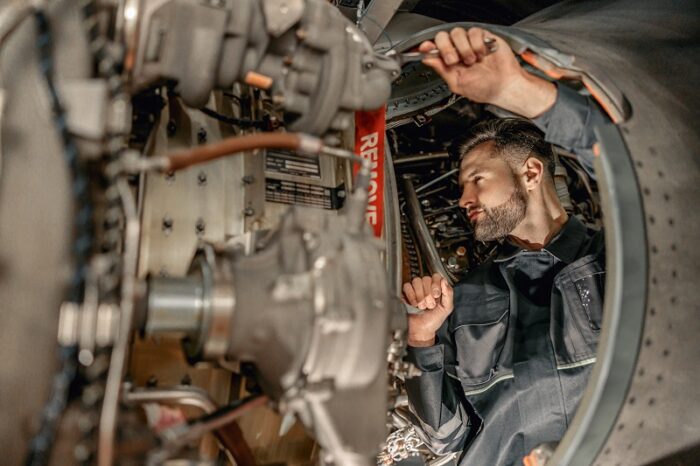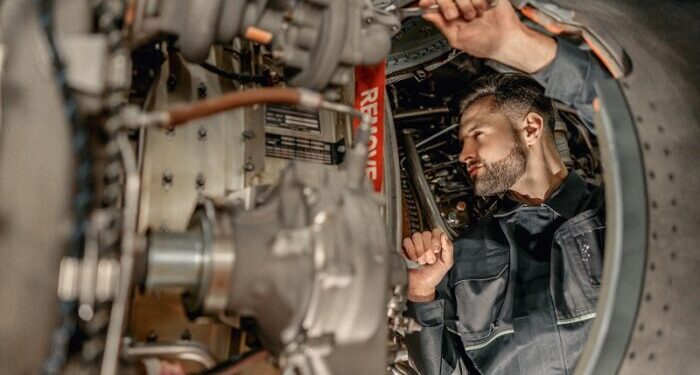Global Avionics Round-Up from Aircraft Value News (AVN)

Male worker aviation maintenance technician using wrench while repairing airplane at repair station
In recent months, at trade shows, conferences, and seminars, aviation industry analysts have bemoaned a growing challenge: a shortage of qualified repair technicians and training programs in the field of avionics. This shortage has created a bottleneck in the growth of the aviation sector, putting pressure on aircraft advancement, demand, base values, and lease rates.
As airlines and manufacturers push for more technologically advanced aircraft, the demand for skilled avionics technicians has skyrocketed. However, the number of qualified technicians has not kept pace with the industry’s rapid technological advancements.
Modern aircraft, especially those like the Airbus A350-1000 and Boeing 777X, rely on newly developed avionics systems to operate efficiently and safely. When there aren’t enough skilled personnel to maintain and repair these complex systems, aircraft advancements slow down. Innovations in autonomous flight, enhanced safety measures, and fuel efficiency are at risk of being delayed due to the inability to provide adequate technical support.
The shortage of qualified avionics technicians also is affecting the demand for aircraft, particularly in the used market. Airlines hesitate to acquire newer, high-tech planes when they lack confidence in having sufficient maintenance support. This uncertainty can suppress demand for aircraft models with advanced avionics systems, which in turn affects their base values and lease rates.
For example, aircraft with advanced avionics systems like the Boeing 787 Dreamliner or the Airbus A220 may nonetheless experience lower-than-expected values due to this skills gap. Leasing companies also may find it difficult to command higher lease rates for aircraft if operators are uncertain about maintenance and repair capabilities. The backlog of maintenance work can lead to longer downtimes, increasing the operational costs for airlines and making it harder for leasing companies to capitalize on their assets.
One of the primary causes of this shortage is the lack of sufficient training programs. Many of the avionics systems in use today are relatively new, and training institutions have not had enough time to develop comprehensive curricula to teach students how to repair and maintain these systems. Moreover, with the pace of avionics innovation, even experienced technicians find it difficult to stay up to date without continuous learning.
In response to this crisis, several initiatives have been launched to address the training gap. Aircraft manufacturers like Boeing and Airbus are partnering with aviation schools and technical institutions to develop specialized avionics training programs.
These partnerships are designed to ensure that the next generation of technicians is well-versed in the latest technologies. Some companies are also investing in virtual reality (VR) and augmented reality (AR) platforms to simulate real-world avionics repair scenarios, allowing technicians to gain practical experience in a controlled environment.
Additionally, governments and regulatory bodies are recognizing the need to support vocational training in avionics. In several countries, funding is being allocated to increase enrollment in technical schools and incentivize young professionals to pursue careers in aircraft maintenance.
The avionics industry’s technician shortage is a growing problem that threatens the advancement of aviation technology and creates uncertainty in the market. By investing in training programs, leveraging new technologies like VR and AR, and partnering with manufacturers, the industry is making strides toward solving the problem. However, a concerted, global effort is needed to ensure that the aviation sector can continue to grow without being hindered by a lack of skilled personnel.
This article also appears in the November 4 issue of our partner publication Aircraft Value News.
John Persinos is the editor-in-chief of Aircraft Value News. You can reach John at: [email protected]






